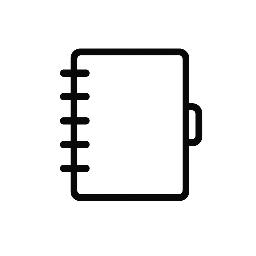Installing rain gutters requires specific tools to ensure a secure, watertight fit. The essential tools include a ladder, tape measure, drill, tin snips, sealant, and a level to properly cut, mount, and seal gutters. Without the right tools, the installation process can be inefficient and prone to errors.
Professionals and DIY enthusiasts both rely on these tools to handle tasks like measuring lengths, cutting gutters to size, attaching brackets, and sealing joints. Each tool plays a critical role in creating a gutter system that effectively directs rainwater away from the home’s foundation.
Understanding which tools are necessary helps avoid costly mistakes and reduces the time spent on the project. Knowing what to use gives confidence and precision to anyone preparing for rain gutter installation.
Essential Rain Gutter Installation Tools
Proper rain gutter installation tools requires accurate measurements, precise cuts, and secure fastening. Each tool plays a specific role in ensuring the gutters fit perfectly and hold up against weather.
Measuring And Marking Tools
Accurate measurements are critical for fitting gutters correctly. A measuring tape of at least 25 feet is standard for taking long stretches of roofline. A chalk line helps mark straight, level lines on fascia boards.
A carpenter’s pencil or a permanent marker ensures visibility on metal gutters during cutting. A level is essential to check the angle of the gutter, which should slope slightly toward downspouts to allow water flow. These tools ensure precision, avoiding gaps or improper drainage.
Cutting Tools For Gutters
Cutting gutters cleanly prevents leaks and ensures proper fitting. A hacksaw or a metal-cutting circular saw with a fine-toothed blade is commonly used for cutting aluminum and steel gutters. For ease, a tin snips pair helps trim smaller sections or make curved cuts.
Safety gloves are recommended when handling sharp metal edges during cuts. Using the correct tool prevents jagged edges, maintaining the structural integrity of the gutter system.
Fastening And Joining Equipment
Joining gutter sections securely is essential for durability. Pop rivets or gutter screws connect adjoining pieces tightly. A riveter tool is needed for fast installing rivets quickly.
Sealants designed for gutters prevent leaks at joints and corners. A caulking gun applies sealant evenly. Brackets or hangars attach gutters firmly to the fascia, ensuring they remain stable during heavy rain or wind.
Each fastening tool contributes to a leak-proof, long-lasting gutter installation.
Safety And Maintenance Equipment
Proper safety and maintenance equipment is essential for effective rain gutter installation. This includes stable access tools, protective gear, and systems for cleaning and storing equipment to keep the worksite organized and safe.
Ladders And Stabilizers
Using the correct ladder type is critical. Extension ladders with non-slip feet are preferred for reaching roof edges. Ladder stabilizers attach to the ladder’s top, increasing contact with the wall and preventing swaying or slipping.
Ladder height should allow safe access without overreaching. He should place ladders on level ground and use ladder levelers if necessary on uneven surfaces.
Safety features to consider include locking mechanisms, slip-resistant rungs, and weight ratings matching the user’s load. Portable scaffold platforms may be used for longer tasks to reduce fatigue and improve access.
Personal Protective Gear
Personal protective equipment (PPE) protects against cuts, falls, and debris. Safety helmets guard against head injuries, especially when working near roofing materials or trees. Gloves with durable grip prevent hand cuts from sharp gutter edges.
Eye protection, such as safety glasses or goggles, shields from dust and metal shards. Non-slip footwear provides traction while climbing ladders or walking on potentially wet surfaces.
Hearing protection might be necessary when using power tools like metal shears or drills. Wearing high-visibility clothing helps others spot workers near traffic or busy areas.
Cleanup And Storage Solutions
Proper cleanup reduces hazards and prolongs tool life. Reusable containers or tarp covers collect debris such as leaves and metal scraps to make disposal easier. A dedicated brush or blower quickly clears gutters and work areas.
After use, tools should be wiped down to remove dirt, moisture, and residues that cause rust or corrosion. Storage racks or toolboxes organize equipment and prevent damage.
Securing ladders and other bulky items in a sheltered, dry location extends their lifespan. Labeling storage areas ensures workers find and return tools efficiently during ongoing projects.


Leave a Reply